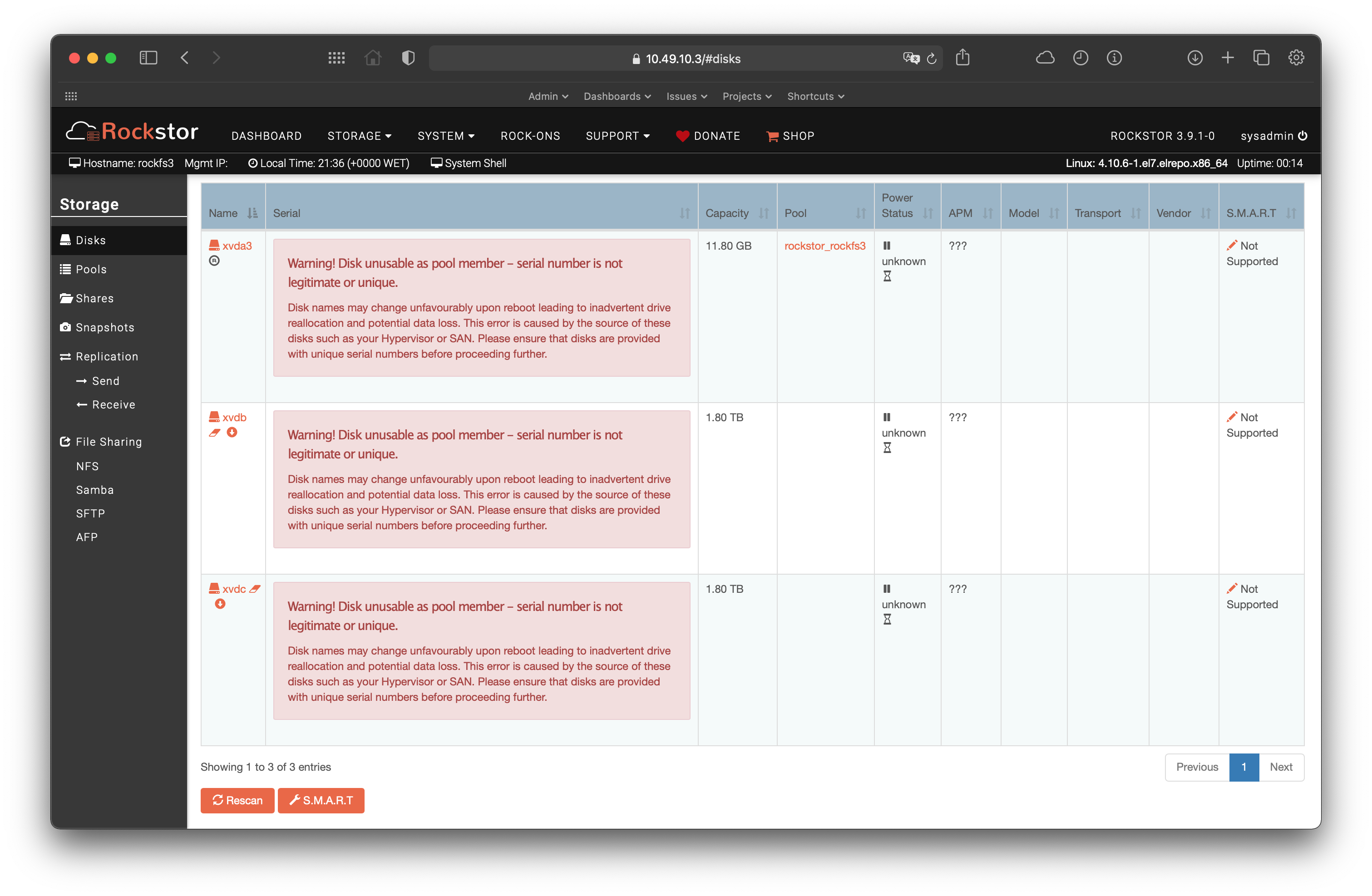Hi all,
I’m having some trouble creating a rockstor VM with two passthrough drives on a Xen XCP-ng Server (8.2).
To resume what was done, the drives were put in Passthrough using the following method:
mkdir /srv/SR_NAME
xe sr-create host-uuid=uuid_of_host name-label=”DISKS SR” name-description=”DISKS SR” type=udev content-type=disk device-config:location=/srv/SR_NAME
ln -s /dev/sdb /srv/SR_NAME/sdb
ln -s /dev/sdc /srv/SR_NAME/sdc
xe sr-scan uuid=YOUR_NEW_UUID
Created a VM with 2CPU 4GB RAM and 1st disk 16GB and attached the previous disks to the VM.
After booting the VM hit tab erase everything to dhcp to avoid the sda error, installation starts.
I select the disk for install, used manual partitioning, no /home partition, 4GB /swap, 500MB /boot and the rest of free space to /. Filesystem btrfs.
Start the install/finish the install. Reboot.
Machine boots fine. I go to the server address on the browser open the initial rockstor page put the hostname, username, password twice.
I get this error when hit continue:
##### Houston, we’ve had a problem.
Error running a command. cmd = /sbin/btrfs filesystem show /dev/disk/by-id/xvda3. rc = 1. stdout = [’’]. stderr = [‘ERROR: not a valid btrfs filesystem: /dev/disk/by-id/xvda3’, ‘’]
Traceback (most recent call last):
File "/opt/rockstor/src/rockstor/rest_framework_custom/generic_view.py", line 41, in _handle_exception
yield
File "/opt/rockstor/src/rockstor/storageadmin/views/disk.py", line 377, in post
return self._update_disk_state()
File "/opt/rockstor/eggs/Django-1.8.16-py2.7.egg/django/utils/decorators.py", line 145, in inner
return func(*args, **kwargs)
File "/opt/rockstor/src/rockstor/storageadmin/views/disk.py", line 322, in _update_disk_state
p.uuid = btrfs_uuid(dob.name)
File "/opt/rockstor/src/rockstor/fs/btrfs.py", line 1055, in btrfs_uuid
[BTRFS, 'filesystem', 'show', '/dev/disk/by-id/%s' % disk])
File "/opt/rockstor/src/rockstor/system/osi.py", line 115, in run_command
raise CommandException(cmd, out, err, rc)
CommandException: Error running a command. cmd = /sbin/btrfs filesystem show /dev/disk/by-id/xvda3. rc = 1. stdout = ['']. stderr = ['ERROR: not a valid btrfs filesystem: /dev/disk/by-id/xvda3', '']
But if I go on cli and check which fs it is:
# df -Th | grep "^/dev"
/dev/xvda3 btrfs 12G 1.6G 11G 14% /
/dev/xvda1 ext4 477M 113M 335M 26% /boot
/dev/xvda3 btrfs 12G 1.6G 11G 14% /mnt2/rockstor_rockfs3
If I reload the page I am logged in, but going to Storage > Disks is empty, and “Rescan” gives the same error as before.
